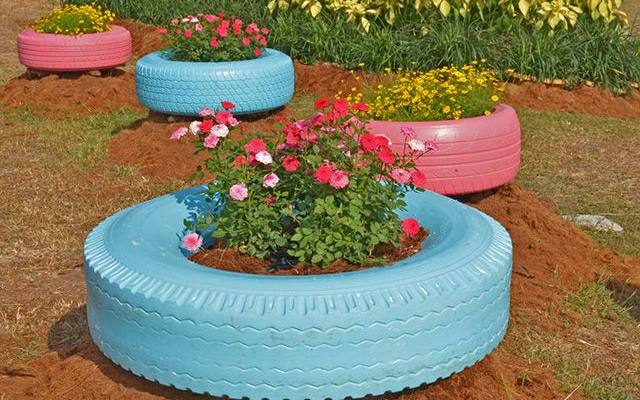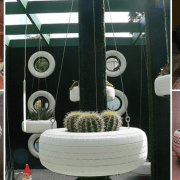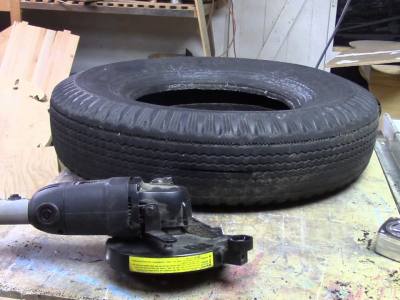Tire garden planters not only help recycle old tires but also increase the yield of a garden. It is not tedious like a wood or stone planter. It relies on simple tools and types of equipment for manufacture. These planters help drain off the water quickly and hence, are an appropriate alternative for plants. They decrease the growth of weeds and grasses and offer nutrients to the plant.
However, a tire planter provides warmth to plants and, some plants may be sensitive to heat. Alternatively, you can choose crops like tomatoes, sweet potatoes, and peppers for your tire planter ideas. The first step is to cut the rubber tire for making a tire pot. In this blog, let us look at how we cut a tire for a planter.
Things You Will Need:
- Hammer and sharp chisel.
- Table saw.
- Heavy blade sharp knife
- Band saw
- Tires with fabric reinforcing.
- Block of wood
- Reciprocating saw.
How To Cut the Actual Tire?
Use A Hammer and Chisel
Select a tire section to start working with, as you cannot lift a heavy tire every time you want to work on something. Do not cut the rim on the inside as there is a heavy band of steel wire reinforcement present there. Place a heavy wood block behind the tire for sturdy and precise cutting. Always mark the lines where you want to the tire, and do not trust your instincts for this purpose as it may go wrong and disturb your planter.
Sharpen your chisel before use to get clean, minimal, disturbance-free cuts. Use a mini sledgehammer for pounding. Take the wooden block, place it under a tire, and cut along the cutting lines with the help of a chisel. Pull it off as you cut. Keep cutting along the cut line with a chisel and hammer and free up the piece from the surface of the tire.
[amazon box=”B07TK1XYWL”]Use A Knife
Brush the edges of the heavy blade knife with sandpaper and sharpen them. Cut slowly along the cutting line in back and forth motion. Do not let the blade stick inside the rubber surface of the tire, as it will require some pushing to be free. On the other hand, this pushing might slide the knife and can cut your fingers. Hence, extra care and precautions are necessary.
Keep resharpening the blade each time you cut and help it stay sharp. You can even keep the sandpaper close by to you. When you think that the knife has gone up a little blunt, resharpen the blade. Alternatively, you can also trim away the excess waste tire so that the knife does not bind. Ensure freedom to the knife as much as possible. Remember to remove any pieces or strings of steel wires or other reinforcements from the tire with a hacksaw before working with a knife.
[amazon box=”B01BIVZ8XI”]Use Power Tools
Select a tire section first. Simultaneously choose a blade for either your reciprocating saw or your table saw and band saw. The smaller the tooth size, the better the result will be. Ensure that you do not disturb the sealing bead around the inner rim, as it may contain heavy wire to destroy the blades of your saw. Remember to check whether the tire is cloth or fiberglass-reinforced, as steel will harm the saw blades.
Work with the cutting blade slowly along the cutting line and keep pulling the rubber to prevent the sticking of the tool. Remember to make thinner cuts. Trim away any leftover material from the rubber tire and keep the instrument free and safe. Stop the work immediately if the blade sticks and make several cuts in the pattern to rub away waster material around the tire.
Work slowly and steadily to prevent a sticking tool. Remember to cut the waste rubber blades occasionally to ensure a free and safe work environment. Do not apply strength on the tire and keep sharp tools for a clean, minimal, and professional cut.
Final Word
Cutting a tire is the first step towards your tire planter ideas and requires precision and skills. Moreover, take care of your safety and wear goggles and protective equipment. Do not handle the strings of melted rubber and let them fall off. Though cutting requires some amount of force, do not force the blades on the tire. Use nonsteel belted rubber tires for cutting as using steel belts may damage your tires and injure you.












Comments